History of Tampa, Florida
The modern history of Tampa, Florida can be traced to the founding of Fort Brooke at the mouth of the Hillsborough River in today's downtown in 1824, soon after the United States had taken possession of Florida from Spain. The outpost brought a small population of civilians to the area, and the town of Tampa was first incorporated in 1855.
Growth came slowly as poor transportation links, conflicts with the Seminole tribe, and repeated outbreaks of yellow fever made development difficult. The Civil War and Reconstruction caused the city government to disincorporate for over a decade.
In the 1880s the construction of the first railroad links laid by Henry B. Plant brought the development of thriving cigar and phosphate industries. The founding of the cigar-centered neighborhood of Ybor City in 1885 brought an influx of Cubans, Spaniards, Italians, and other immigrants. Tampa's population jumped from less than 800 residents in 1880 to over 15,000 in 1900, making it one of the largest cities in Florida.
By the 20th century Tampa emerged as a modern financial, trade, and commercial hub. It saw the start of the Gasparilla Pirate Festival and pioneering aviator Tony Jannus captaining the inaugural flight of the St. Petersburg-Tampa Airboat Line, the world's first commercial passenger airline. It also saw the rise of organized crime.
The number of residents exceeded 100,000 during the 1930s, 250,000 during the 1950s, and 300,000 during the 1990s. The land area of Tampa also grew, most notably when the city annexed the neighboring communities of West Tampa in 1925, Sulphur Springs and Palma Ceia in 1953, Port Tampa in 1961, and New Tampa in 1988. Most of the land added to Tampa over the years was unincorporated. Five incorporated municipalities have been consolidated into Tampa: North Tampa, Ybor City, Fort Brooke, West Tampa, and Port Tampa.[1]
Etymology
| History of Florida |
|---|
 The seal of Florida reflects the state's Native American history |
|
Topics
|
|
Timeline
|
|
|
There is some dispute as to the origin and meaning of the name "Tampa". It is believed to mean "sticks of fire" in the language of the Calusa, an Indian tribe that once lived south of the area. This may relate to the high concentration of lightning strikes that west central Florida receives every year during the summer months.
Other historians claim the name refers to "the place to gather sticks". Toponymist George R. Stewart writes that the name was the result of a miscommunication between the Spanish and the Indians, the Indian word being "itimpi", meaning simply "near it".[2] Another source relates Tampa comes from a Seminole word for wood.[3]
The name first appears in the memoir of Hernando de Escalante Fontaneda from 1575, who had spent 17 years as a Calusa captive. He calls it "Tanpa" and describes it as an important Calusa town.
While "Tanpa" may be the basis for the modern name "Tampa", archaeologist Jerald Milanich places the Calusa village of Tanpa at the mouth of Charlotte Harbor near current day Pineland. Map maker Bernard Romans found certain difficulties in translating earlier Spanish-era maps of Florida for English use and may have accidentally transferred the name north to Tampa Bay, the next large inlet up the west coast of Florida.[4]
Early history
Indigenous population
Archeological evidence indicates that the shores of Tampa Bay have been inhabited for thousands of years. Artifacts suggest that early inhabitants of the region relied on the sea for most of their resources, and a vast majority of inhabited sites have been found on or near the shoreline.
The Manasota culture is the earliest documented group, spanning from about 500 B.C. until about 700 A.D., by which time it had evolved into the Safety Harbor culture. It loosely organized into three or four chiefdoms on the shores of the bay.
The Tocobaga's principal town was located at the northern end of Old Tampa Bay near today's Safety Harbor in Pinellas County. Uzita controlled the south shore of Tampa Bay, from the Little Manatee River to Sarasota Bay. Mocoso was on the east side of Tampa Bay, on the Alafia River and, possibly, the Hillsborough River. There may have been a fourth independent chiefdom, the Pohoy or Capaloey, centered on Hillsborough Bay near today's downtown and port, possibly extending to the Hillsborough River.[5][6]
These small coastal villages contained a temple mound, a central plaza, and one or more shell middens, which were trash heaps from which much archeological information has been obtained.[7][8] These mounds and middens survived long after their builders were gone. However, the vast majority were leveled and/or used for road fill as Tampa and surrounding communities grew in the 20th century.[9][10]
European exploration
Spanish expeditions
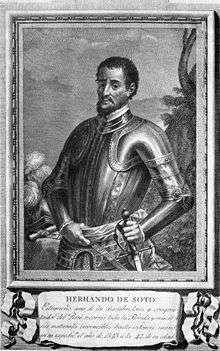
Though Spain claimed all of Florida as its possession as part of New Spain, it could not successfully establish a settlement on the west coast and did not attempt to do so until after the mid-1500s.
The first Europeans came in April 1528. The ill-fated Narváez Expedition landed near present-day Tampa with the intention of starting a colony. After being told by the natives of wealthier cultures to the north, they abandoned their camp after only a week to begin a long but futile search for non-existent riches. A dozen years later, a surviving member of the expedition named Juan Ortiz was rescued by Hernando de Soto's expedition.[11][12]
De Soto conducted a peace treaty with the Tocobaga, and a short-lived Spanish outpost was established. However, this was abandoned when it became clear that there was no gold in the area, that the local Indians were not interested in converting to Catholicism, and that they were too skilled as warriors to easily conquer.
Though they successfully avoided being conquered by guns, the indigenous peoples had little defense against germs. Diseases introduced by European contact would decimate the native population in the ensuing decades,[13] leading to the near-total collapse of every established culture across peninsular Florida. Between this depopulation and the indifference of its colonial owners, the Tampa Bay area would be virtually uninhabited for the next 200+ years.
English rule
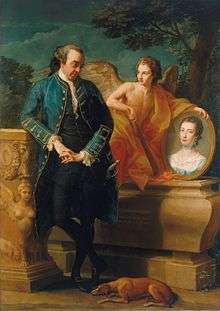
Great Britain acquired Florida in 1763 as part of the treaty which ended the French and Indian War (Seven Years' War). The bay was rechristened "Hillsborough Bay" after Lord Hillsborough, the then-Secretary of State for the Colonies. Though the name "Tampa Bay" was later restored, the English period is still reflected in the names of Hillsborough river and county. Like Spain, Britain was much more concerned with the strategically important Atlantic coast of Florida (especially St. Augustine) than other parts of the territory and did not attempt to found settlements along the Gulf coast.
However, the Tampa Bay area did have a few residents: Indians and Cuban fishermen who lived in a seasonal encampment at the mouth of Spanish Town Creek, a freshwater stream that once ran through today's Hyde Park neighborhood to Bayshore Boulevard. A handful of these people may have stayed year round, but the majority spent a few months catching and smoking fish (especially mullet) from the teeming waters of the bay, then returned to sell them in Cuba.[14]
Spain regained control of Florida in 1783 as part of the Treaty of Paris at the end of the American Revolution. Once again, the Florida's Gulf Coast was not a vital concern to its European owner.
Florida becomes a US territory
Since the mid-1700s, people from various native Indian tribes, especially Creeks from Georgia, had fled to largely uninhabited Florida to distance themselves from encroaching settlers in their homelands. They were joined by escaped slaves from neighboring colonies / states, and these disparate refugees developed a new Seminole culture.
Fort Brooke and the Seminole Wars
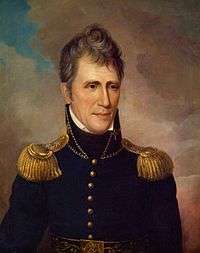
After the War of 1812, Andrew Jackson invaded Florida kicking off the First Seminole War. In 1821, the United States purchased Florida from Spain, mainly to end (alleged) cross-frontier Indians raids and to eliminate the southern refuge for slaves. In fact, one of the first U.S. actions in its new territory was to launch a raid which destroyed Angola, a village built by escaped slaves on the eastern shore of Tampa Bay.[15][16]
Fort Brooke
In 1823, the United States imposed upon the leaders of the Seminoles to sign the Treaty of Moultrie Creek, which created a large Indian reservation in the interior of peninsular Florida. The U.S. government then built a series of forts and trading posts throughout the territory to enforce the provisions of the treaty.[17]
As part of this effort, Fort Brooke was established on January 10, 1824 by Colonels George Mercer Brooke and James Gadsden at the mouth of the Hillsborough River on Tampa Bay, just about where today's Tampa Convention Center sits downtown. The site was marked by a huge hickory tree set atop an ancient Indian mound most likely built by the Tocobaga centuries before.
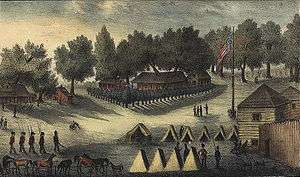
Colonel Brooke, the outpost's first commander, directed his troops to clear the area for the construction of a wooden fort and support buildings, but ordered that several ancient live oak trees inside the encampment be spared to provide shade and cheer.[9] On January 22, 1824, the post was officially named Fort Brooke.[18] John Mercer Brooke was born there. The first post office was established in 1831.[11]
Second Seminole War
A few settlers established homesteads near the palisade, but growth was very slow due to difficult pioneer conditions and the constant fear of attack from the Seminole population, some of whom lived nearby in an uneasy truce.
Following Osceola's murder of the US Indian agent General Wiley Thompson, in December 1835 Osceola and Micanopy ambushed the forces of Major Francis L. Dade while they were on their way from Fort Brooke to Fort King (near present-day Ocala) in a rout that was dubbed the Dade Massacre, triggering the Second Seminole War.
During the war, Fort Brooke first served as a refuge for settlers, then as a vital military depot and staging area. After almost seven years of vicious fighting, the war was over and the Seminoles were forced away from the Tampa region, and the tiny village began a period of slow growth.
Third Seminole War
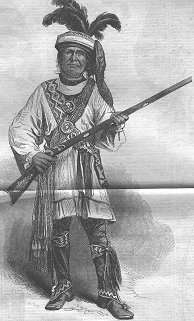
Seminole chief Billy Bowlegs attacked the whites at Fort Myers in late 1855 triggering the Third Seminole War. When the news of the attack reached Tampa, the men of the city elected militia officers and organized companies. The newly formed militia marched to the Peace River valley, recruited more men, and manned some forts along the river.
Statehood to Civil War
The Territory of Florida had grown enough by 1845 to become the 27th state. Pioneer families of Tampa during the antebellum period migrated largely from Northern Florida, Central Florida, Georgia, Alabama and the Carolinas, along with their slaves, excepting a few settlers from Ireland, France, Spain and the North.[19] John Parker was the town's first sheriff. James T. Magbee was the town's first lawyer. The first school in Tampa was opened by W. P. Wilson at the site of the courthouse on September 11, 1848.
1848 hurricane
A strong hurricane in late September 1848 almost washed away the budding growth. Every building in Tampa was either damaged or destroyed, including most of Fort Brooke. Much of the population stayed to rebuild, and some desperate lobbying in Washington, D.C. persuaded the US Army to reconsider a plan to abandon the fort and its garrison of troops.[9]
Incorporation and early township
The settlement of Tampa recovered enough by 1849 to incorporate as the "Village of Tampa", which officially occurred on January 18. At the time, Tampa was home to 185 inhabitants, excluding military personnel stationed at Fort Brooke. The city's first official census count in 1850 listed Tampa-Fort Brooke as having 974 residents.[20] Oaklawn Cemetery, the first public burying ground, was established the same year.
In 1855 the first official law enforcement position created was City Marshall. Tampa was reincorporated as a town on December 15, 1855, and Judge Joseph B. Lancaster became the first Mayor in 1856.[21][22]
First churches
Evidence of the young community's growth was seen as its first churches appeared. Tampa's first church was established by a Methodist congregation in 1846.[n 1] The Methodists were followed by the Baptists, who organized the First Baptist Church of Tampa in 1859,[24] and the Catholics, who founded a parish in Tampa the following year.[25]
Civil War
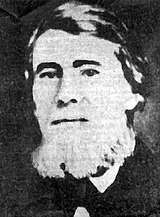
On January 10, 1861, the state of Florida seceded from the United States along with the rest of the American South to form the Confederate States of America, touching off the American Civil War.
Two Tampa locals attended the Secession Convention; judge and Florida Peninsular newspaper editor Simon Turman and lawyer James Gettis. The Peninsular was one of Tampa's oldest media publications. Both Turman and Gettis signed the Ordinance of Secession.[26][27] Gettis's law partner was Henry L. Mitchell.
Fort Brooke was soon manned by Confederate troops and martial law was declared in Tampa in January 1862. Tampa's city government ceased to operate for the duration of the war.[28]
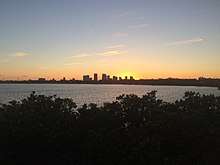
Blockade and blockade runners
In late 1861, the Union navy set up a blockade near the mouth of Tampa Bay as part of the overall Anaconda Plan, which sought to squeeze the Confederacy off from outside sources of money and supplies. However, several local blockade runners consistently slipped out undetected to the Gulf of Mexico.
Most notable among these was former Tampa mayor James McKay Sr., who delivered Florida cattle and citrus to Spanish Cuba in exchange for gold and supplies before being captured and imprisoned by Union forces.[29] Magbee wanted him tried for treason.[30] McKay Bay, the portion of Tampa Bay adjoining the port, is named in his honor.
Battle of Tampa
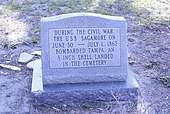
Trying to put a stop to this, the Union gunboat USS Sagamore sailed up Tampa Bay to bombard Fort Brooke under the command of John William Pearson and the surrounding city of Tampa. The Battle of Tampa on June 30–July 1, 1862 was inconclusive, as the shells fell ineffectually and there were no casualties on either side.[31][32] James Gettis was singled out for bravery while manning the cannons.[27]
Battle of Fort Brooke
Much more damaging to the Confederate cause was the Battle of Fort Brooke on October 17–18, 1863. The Union gunboats USS Adela and USS Tahoma came up the bay and, after firing at the fort, landed troops near the town. The Union forces headed a few miles up the Hillsborough River until they found McKay's hidden blockade runners Scottish Chief and Kate Dale near present-day Lowry Park Zoo and burned them at their moorings.[33] The local militia was mustered to intercept the Union troops, but the raiders were able to return to their ships after a short skirmish and headed back out to sea.
War ends
In May 1864, the Adela returned, bringing Union forces to occupy Fort Brooke and Tampa itself. Not finding enough justification to stay, they threw most of the fort's armaments into the Hillsborough River, took much of the city's remaining food and supplies, and left after three days.[33][34] The war ended in Confederate defeat the following spring, 1865.
Reconstruction
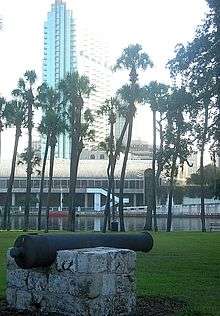
In May, federal troops arrived in Tampa to occupy the fort and the town as part of Reconstruction. They would remain until August, 1869.[33] It left much of the town in disrepair and the population depleted. As one returning soldier wrote, "Tampa was a hard-looking place. Streets and lots were grown up with weeds and the outlook certainly was not very encouraging."[35] Simon Turman's wife Meroba Hooker Crane operated the Orange Grove Hotel since 1867, and helped preserve Oaklawn Cemetery.
As farms and ranches in the interior recovered, Tampa's small port resumed shipping Florida cattle, oranges, and other produce, primarily to New Orleans, Key West, and Cuba, which was experiencing the Ten Years' War. McKay, W. B. Henderson, and John T. Lesley all drove cattle to the port during this time. Only sandy wagon roads linked the town with the east coast of Florida.
In 1873, Henderson and Norwegian sailor John Miller established the largest grocery store south of Jacksonville, which would eventually house Tampa's first telegraph.[36][37] Also in 1873, the Tampa Guardian newspaper began publication. Ossian B. Hart was governor. The Gainesville-Tampa stagecoach began operating in 1877.[11] The Captain William Parker Jackson House was built in the 1870s.
Yellow fever

Yellow fever had always been a threat in early Tampa, but the disease hit with terrifying regularity throughout the 1860s, 1870s and 1880s. Borne by mosquitoes from the surrounding swampland, Tampa was hit by several yellow fever epidemics and scares throughout the period, including severe ones in 1873 and 1887–88.[38] The disease was little understood at the time, and some residents simply fled.
Conditions in the city deteriorated to the point that residents voted to temporarily disincorporate the city in 1869.[n 2] However, it would reincorporate in 1872. As a result, Tampa's population fell from approximately 885 in 1861[40] to 796 in 1870 and 720 in 1880.
Fort Brooke decommissioned
Fort Brooke was decommissioned in 1883. Except for two cannons fished from the river and displayed on the nearby University of Tampa campus, all traces of the fort are gone.[n 3]
Late 19th Century growth
| Historical population | |||
|---|---|---|---|
| Census | Pop. | %± | |
| 1850 | 974 | — | |
| 1870 | 796 | — | |
| 1880 | 720 | −9.5% | |
| 1890 | 5,532 | 668.3% | |
| 1900 | 15,839 | 186.3% | |
| 1910 | 37,782 | 138.5% | |
| 1920 | 51,608 | 36.6% | |
| 1930 | 101,161 | 96.0% | |
| 1940 | 108,391 | 7.1% | |
| 1950 | 124,681 | 15.0% | |
| 1960 | 274,970 | 120.5% | |
| 1970 | 277,714 | 1.0% | |
| 1980 | 271,523 | −2.2% | |
| 1990 | 280,015 | 3.1% | |
| 2000 | 303,447 | 8.4% | |
| 2010 | 335,709 | 10.6% | |
| source:[n 4] | |||
Tampa's fortunes shifted dramatically beginning in the 1880s with the construction of the first railroad links to the town and the development of thriving cigar and phosphate industries – all within a decade. Of particular importance was the founding of the cigar-centered neighborhood of Ybor City in 1885, which brought a large influx of Cubans, Spaniards, Italians, and a handful of other immigrants to what had previously been a typical small southern town. Ybor City and North Tampa were annexed into Tampa in 1887.[1]
These changes combined to bring sudden prosperity and explosive growth – Tampa's population jumped from less than 800 residents in 1880 to over 15,000 in 1900, making it one of the largest cities in Florida.
W. B. Henderson was foreman of the first volunteer fire fighting group in Tampa, Hook & Ladder Company No. 1, organized in 1884. On May 8, 1886 a fire destroyed all the buildings on the block bounded by Franklin, Whiting, Tampa, and Washington streets, with the exception of the First National Bank.[43] Also in 1886, the first police force was created in Tampa.
Herman Glogowski, the town's first Jewish mayor, was elected in 1886. Also in 1886, Maas Brothers department store was founded by Abe and Bena Maas, also Jewish, which would eventually grow to a chain of 39 stores throughout the state.
Henderson assisted in the creation of the Tampa Times newspaper in 1893, and daily publication of the Tampa Tribune began in 1895 when Wallace Stovall upgraded printing from once a week.[n 5] Also in 1895, Eleanor Chamberlain was president of Tampa's first suffrage organization.
Phosphate discovered
Phosphate, a mineral used to make fertilizers and other products, was discovered in the Bone Valley region southeast of Tampa in 1880 by "Captain Bill" Kendrick, "the original Florida cracker".[44][45] Soon, the mining and shipping of phosphate became important area industries. Tampa's port still ships millions of tons of phosphate annually, and the area is known as the "phosphate capital of the world."[46]
Railroad
Henry B. Plant
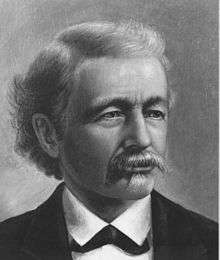
After decades of efforts by local leaders to connect the area to the United States' rapidly growing railroad network, Tampa's long-standing overland transportation problem was finally remedied in February 1884, when Henry B. Plant ran a railroad line west across central Florida to connect the Tampa Bay area to his railroad network, including his South Florida Railroad. Henry Haines constructed the Sanford-Tampa line.
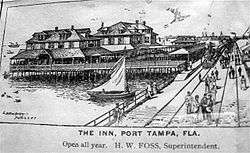
The railroad enabled phosphate and commercial fishing exports to go north,[47] brought many new products into the Tampa market, and started the first real tourist industry: visitors coming in modest numbers to Henry Plant's first Tampa-area hotels.
Plant continued his rail line across Tampa to the western side of the Tampa Peninsula, where he built the new town of Port Tampa City on Old Tampa Bay. There, he constructed the St. Elmo Inn and Port Tampa Inn for a hoped-for influx of visitors. The Port Tampa Inn was larger and had the distinction of being constructed directly on the bay on stilts.[48] Both of these early hotels are long gone.
The Tampa Bay Hotel
.jpg)
Plant Park was laid out in 1888. In 1891, Plant built a lavish 500+ room, quarter-mile long luxury resort hotel called the Tampa Bay Hotel among 150 acres (0.6 km2) of manicured gardens on the west bank of the Hillsborough River across from today's downtown, perhaps the most prominent early feature of Tampa's cityscape. Designed by J. A. Wood, the eclectic Moorish Revival structure with minarets cost $2.5 million to build, a huge sum for the time.
Plant went on an extensive European tour while the resort was being built and sent back exotic art collectables from around the world to display at his "playground". The structure also boasted the first electric lights in Tampa and the first elevator in Florida.[49] Heavy promotion in the Northeast US helped the hotel attract steady business for a few years.
Streetcars

The first streetcars between downtown Tampa and Ybor City used wood-burning steam engines and were installed in 1885 by J. E. Mitchell, operated by the Tampa Street Railway Company, which included Henderson and Lesley as members.[50]
In 1892 it merged with the Florida Electric Company to form the Tampa Street Railway and Power Company, and converted to electrically powered streetcars in 1893. The Consumers Electric Light and Street Railway Company bought out the Tampa Street Railway Company in 1894. The company also acquired control of the Tampa and Palmetto Beach Rail Company, becoming the sole streetcar operator in Tampa. The Tampa Electric Company acquired control of the Consumers Electric Light and Street Railway Company in 1899.
The Tampa Electric Company acquired 21 miles (34 km) of streetcar track. After acquiring the Tampa and Sulphur Springs Traction Company in 1913, Tampa Electric had almost 50 miles (80 km) of track, increasing to 53 miles (85 km) by 1926. That year the Tampa Electric system carried almost 24 million passengers. The streetcar system in Tampa was shut down after World War II.
Streetcars returned to Tampa in 2002, when the initial 2.4 mi (3.86 km) long heritage line was opened, operated by the transit authority.
Cigar industry
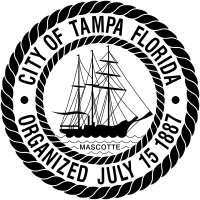
The new railroad link attracted another industry which would finally make Tampa prosper. In 1885, the Tampa Board of Trade, especially W. C. Brown and W. B. Henderson, helped broker a land deal with Vicente Martinez Ybor, Ignacio Haya, and Gavino Gutierrez to move their cigar manufacturing operations to Tampa from Key West.[51][52]
Gutierrez had first come to Tampa in 1884 due to a false rumor about the ability to find guava trees.[n 6] Ybor had been attracted by Tampa's warm and humid climate, which kept tobacco fresh and workable, and its new transportation links. Close proximity (and Henry Plant's steamships) made import of fine Cuban tobacco easy by sea, and Plant's railroad made shipment of finished cigars to the rest of the US market easy by land. This relationship is acknowledged in the Seal of Tampa, which depicts Plant's steamship Mascotte, a vessel that carried thousands of immigrants and tons of tobacco to Tampa.
Ybor City
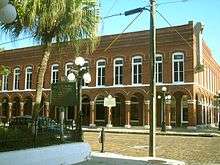
Ybor built the Ybor Factory Building and El Pasaje and Ybor City (as the settlement was dubbed) quickly made Tampa a major cigar production center. Ybor City began as a separate municipality, but, seeing the potential for greatly increased tax rolls, the city of Tampa annexed the bustling community in 1886.
Since Tampa was still a small town at the time (population less than 5,000), Ybor built hundreds of small houses around his factory to accommodate the immediate influx of thousands of Cuban and Spanish cigar workers. Other cigar manufacturers soon moved in, such as Cuesta-Rey. In 1896, Ybor built a large brewery, the tallest building in the historic district.
Immigrants
Cubans
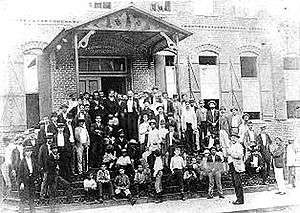
In the early 1890s, José Martí was invited to Ybor City to collect funding for the cause of Cuban independence, which he did alongside Paulina Pedroso.
Spaniards
In the 1890s, Las Novedades, Tampa's oldest restaurant, opened.[53]
Italians
Starting in the late 1880s, many Italian and a few eastern European Jewish immigrants also arrived. These new arrivals had difficulty breaking into the insular cigar businesses, so many opened businesses and shops that catered to the cigar workers.
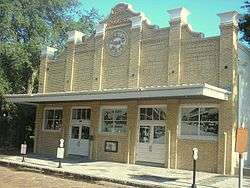
The majority of Italian immigrants came from Alessandria Della Rocca and Santo Stefano Quisquina, two small Sicilian towns with which Tampa still maintains strong ties. In 1896, Sicilian Francisco Ferlita established what is likely the earliest U.S. bakery to produce Cuban bread, now the site of Ybor City Museum State Park.
West Tampa
In 1892, Scottish businessman Hugh MacFarlane founded West Tampa, a new community across the Hillsborough River that sought to attract more cigar factories and workers. By 1900, the town already had one of the largest populations in Florida, mostly Cubans involved in the cigar industry.[54][55]
New churches
New church denominations came to Tampa, including St. Andrew's Episcopal in 1871,[56] First Presbyterian in 1884,[57] and Zion Lutheran in 1893.[58] Additionally, Tampa's first synagogue, Schaarai Zedek, was founded by the city's Jewish citizenry in 1894.[59]
Black churches
In the era of segregation, the area's black population was required to use separate establishments. This included churches, such as St. James Episcopal, founded in 1895 to serve the predominantly black cigar workers from The Bahamas and Cuba.[60] Other surviving segregation-era churches include Beulah Baptist Institutional Church, formed by freed slaves in 1865,[61] and St. Paul A.M.E., founded in 1870 as Tampa's first African Methodist Episcopal congregation.[62]
New neighborhoods and schools
The first hospital was built in 1887. Tampa's first suburb, Tampa Heights was established by Henderson in 1889.[63] The Hyde Park neighborhood was established on land owned by Obadiah H. Platt. Henry Plant decided to build a lavish resort near the Tampa terminus of his railroad. Plant bought fifteen acres on the west side of the Hillsborough River and in July 1888, the Tampa Bay Hotel's cornerstone was laid. Plant's selection of the Tampa Bay Hotel site was quite deliberate. He chose a large piece of land near his railroad depot, yet separate from the town. In the case of Tampa, the hotel would be such a boon that the city council readily agreed to several concessions to Plant, including low, fixed-rate taxes for his hotel and a promise that the city would build a bridge over the Hillsborough River at Lafayette Street (now Kennedy Boulevard) at the city's expense.[64][65] Plant also brought the Florida Central and Peninsular Railroad into town.[66]
Hillsborough High School, the area's oldest public high school opened in 1882. Hyde Park School, now Gorrie Elementary School, after mechanical cooling pioneer John Gorrie, was built in 1889. Tampa Business College was established in 1890, and telephones began operating that same year. In 1892, the courthouse was constructed, designed by Wood and built by Kendrick's nephew. Jesuit High School opened in 1899.
The Spanish–American War
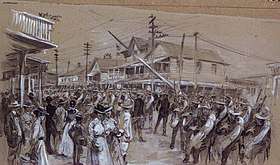
Mainly because of Henry Plant's connections in the War Department, Tampa was chosen as an embarkation center for American forces heading to Cuba for the Spanish–American War. 30,000 troops, wearing thick wool uniforms in the oppressive heat, waited in Tampa for the order to ship out during the summer of 1898, filling the town to bursting.[67] Among the troops were lieutenant Colonel Teddy Roosevelt and his Rough Riders.
Those months were a great boon to Tampa's growing economy. It was the only time when Plant's Tampa Bay Hotel was full to capacity as army officers and newspaper correspondents sought out more comfortable quarters than a hot and dusty tent.[68]
Cuba Libre
The war was very popular in Ybor City. Many of the Cuban cigar workers had long pressed for Cuba Libre – a Cuba free of Spanish colonial rule. With the U.S. entering the war to fight against Spain, it seemed that their dreams would soon be realized.[69]
Sparkman Wharf
During the Spanish–American War, troops headed to battle in Cuba had to assemble far south of downtown at Port Tampa. In 1905, Stephen M. Sparkman, the first member of Congress from what was considered "South Florida", brought in federal money to dig deep-water channels from Port Tampa to Channelside, allowing for larger ships.[70] In 2018, Sparkman Wharf was named for him.[71]
20th century
Burgert Brothers
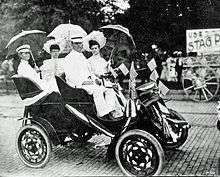
The Burgert Brothers photos began in 1899.[72] They acquired a studio in 1917 and were the leading photographers in Tampa until the early 1960s.
Gasparilla
In 1904, a local civic association of local businessmen dubbed themselves Ye Mystic Krewe of Gasparilla, named after local mythical pirate Jose Gaspar, and staged an "invasion" of the city followed by a parade. With a few exceptions, the Gasparilla Pirate Festival has been held every year since. In 1972, the Sant'Yago Knight Parade was added to the festivities.
Cigars
During the first few decades of the 20th century, the cigar making factories in Ybor City and West Tampa continued to be the backbone of Tampa's economy. In the peak year of 1929, over 500,000,000 cigars were hand rolled in the city.[73]
Hav-a-Tampa
The Hav-a-Tampa Cigar Company was founded by Eli Witt in 1907.[74]
Immigrants
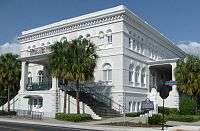
The German-American Club first organized in 1901, with Glogowski as president.
Cubans
In 1902, the year Cuba seceded from Spain, the Circulo Cubano de Tampa was founded, in a building built by M. Leo Elliott. Brocato's Sandwich Shop opened in 1948.
Spaniards
In 1905, the Columbia Restaurant was opened. In 1912, the El Centro Español de Tampa was built by Francis J. Kennard and the El Centro Español of West Tampa was built by Fred J. James. The Centro Asturiano de Tampa was built by Elliott in 1913. La Segunda Central Bakery opened in 1915.
In 1926, physician Mack Winton worked in the Sanatorio del Centro Espanol, which treated Spanish patients.
Italians
Alessi Bakery was founded in 1912. The L'Unione Italiana building designed by Elliott was constructed in 1918. Elliott built Masonic Temple No. 25 to look Italian in 1928.
Newspapers
In 1912, the El Comercio Spanish-language newspaper began publication, and in 1916, the Heraldo Dominical Spanish-language newspaper began publication. In 1922 the trilingual La Gaceta began publication, founded by Victoriano Manteiga, a former lector in the cigar factories.
Growth and changes
Eugene Holtsinger and Alfred Swann arrived in Tampa in 1905. The town of Fort Brooke was annexed in 1907.
Florida Land Boom

In 1921, a hurricane hit Tampa for the first time since 1848. Despite this, the 1920s saw the Florida Land Boom.
During this time, Davis Islands, two man-made islands, were built by developer and Tampa native D. P. Davis. After the bubble burst, in 1926, the Tampa Municipal Hospital on Davis Islands was opened, now Tampa General Hospital.
In 1924, the Gandy Bridge to St. Petersburg was built. Also in 1924 the Old People's Home was built.
In 1922, the WDAE radio began broadcasting and the WFLA radio began broadcasting in 1925. Also in 1925, the Municipal Auditorium was built and Tampa annexed the neighboring town of West Tampa. This approximately doubled the size and population of the city.
Depression
As the market for cigars began to wane during the Great Depression, other industries came to the fore, especially shipping and, of course, tourism. In 1931, there was a strike of cigar workers.
By 1929, Maas Brothers dominated Florida's West Coast. It was known as "Greater Tampa's Greatest Store." The flag of Tampa was adopted in 1930.
The Davis Causeway opened in 1934. The Colonnade restaurant was established in 1935.
WW2
The Fort Homer W. Hesterly Armory was built in the 1930s and dedicated the day of the attack on Pearl Harbor. During World War II, the Tampa Shipbuilding Company built several ships. Frank Adamo was a prison camp physician who took part in the Bataan Death March. Tampa celebrated "Frank Adamo Day" on April 27, 1945 with a parade.
1950s growth
Tampa remained a compact city with a land area of 19 square miles (49 km2) until the mid-1950s.[75][76][77] Its northernmost boundary was the Hillsborough River, in the northern part of the Seminole Heights neighborhood.[78] In 1953, the city annexed over 60 square miles (160 km2) of unincorporated land, including the communities of Sulphur Springs and Palma Ceia. As a result, Tampa grew rapidly, growing by 150,289 residents during the 1950s.[79] The growth also reflected on the city's national ranking. Tampa jumped from 85th in 1950[77] to 48th in 1960.[80] its peak ranking to date.
The television stations WFLA-TV and WTVT began broadcasting in 1955. The Britton Plaza Shopping Center opened the year of 1956. Lowry Park Zoo opened in 1957. Busch Gardens theme park opened in 1959. In 1961, Tampa annexed Port Tampa.[48]
1960s and 1970s decline
The population grew very slowly in the 1960s to reach 277,714 in 1970. Suburban growth hollowed downtown as business deteriorated. Many industries began to move to outlying areas. The combination of the decline of the cigar industry and the construction of Interstates 4 and 275 further deteriorated historic areas such as Ybor City and West Tampa.[54][81] In the midst of this, there were race riots on June 11, 1967.[82]
Four attempts to consolidate Tampa with Hillsborough County (1967, 1970, 1971, and 1972) all failed at the ballot box. The biggest margin was 33,160 for and 73,568 against the proposed charter in 1972.[83]
Further problems in the 1970s lead to the first decline of the city's population in a century, falling to 271,523 in 1980. Tampa's national ranking dropped from 50th in 1970 to 53rd in 1980.[84] In contrast, suburban areas such as Brandon, Carrollwood, and other areas of Hillsborough County experienced rapid growth.
Urban renewal and suburbanization
Urban renewal programs were on the horizon. Despite this, the city only grew three percent in the 1980s to reach 280,015 in 1990.
New Tampa
A big expansion in the size of city came with the development of New Tampa, annexed in 1988. The addition added a 24-square mile (mostly rural) area between I-275 and I-75, increasing the city's total land area from 84 square miles (218 km2) to nearly 109.[84][85]
Aviation
Tampa holds a unique distinction in the history of aviation.
Tony Jannus

Just ten years after the Wright Brothers first took flight in Kitty Hawk, North Carolina. On January 1, 1914, pioneering aviator Tony Jannus captained the inaugural flight of the St. Petersburg-Tampa Airboat Line, the world's first commercial passenger airline. The airline flew scheduled flights from downtown St. Petersburg, Florida, across the bay to just south of where Tampa International Airport sits today, carrying just the pilot and a single passenger in a flying boat biplane.[86]
The airline's historic significance is officially recognized by the Smithsonian National Air and Space Museum, and its pilot is memorialized annually by the awarding of the Tony Jannus Award to individuals of outstanding achievement in scheduled commercial aviation.[87] A permanent exhibit honoring the award recipients is maintained at Tampa International Airport, which also hosts a 12.5 feet (3.8 m) painted mural from the 1930s titled, History's First Scheduled Airline Passenger Arrives in Tampa, depicting the events of New Year's Day, 1914.[88]
World War I
Tallahassee native Dale Mabry was a World War I airship pilot and captain. Mabry died piloting the Army airship Roma, in 1922. The crash killed 34 people in Norfolk, VA.The Dale Mabry Highway was named after him, along with the Dale Mabry Elementary School, and a restaurant named originally Dale 1891.
WPA
During the Great Depression, WPA projects were underway which included Drew Field (later named Tampa International Airport) and Peter O. Knight Airport, on Davis Islands. Peter O. Knight was a prominent lawyer who helped get the airport built. Its Jannus Administration Building was constructed in 1938.
World War II
During World War II, MacDill Air Field opened up for military operations. There was also Hillsborough Army Air Field, also known as Henderson Air Field, today the site of Busch Gardens.
Churches, schools, and libraries
Churches
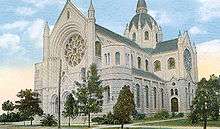
In 1905, Sacred Heart Catholic Church was built by Nicholas J. Clayton. In 1907, the modern St. Andrews Episcopal Church was built by Francis J. Kennard and Michael J. Miller.
Schools
In 1908 the V. M. Ybor school opened for immigrants. Henry Mitchell Elementary School was founded in 1915. Henry B. Plant High School opened in 1927. Hillsborough High moved to its current campus in 1928. From 1911 to 1927, it was at the site of the D. W. Waters Career Center.
Libraries
The West Tampa Free Public Library was built in 1914. The Tampa Public Library, built in 1915 by James. John F. Germany Public Library opened in 1968. The Tampa-Hillsborough County Public Library System started in 1984.
Hotels and theaters
Hotels
The Downtown Post Office was built by James Knox Taylor in 1905. In 1912, Union Hotel was built across from Union Station, which was built by Joseph F. Leitner in 1912. The Palmerin Hotel was founded in 1926. In 1927, the Sulphur Springs Water Tower was built.
Theaters
The Rivoli Theater opened in 1917. The Rialto Theatre opened in 1924. The Tampa Theater opened in 1926. Opera singer Norma Russo arrived in Tampa in 1932.
The Tampa Bay Performing Arts Center started in 1987, as did the Tampa International Gay and Lesbian Film Festival. The Tampa Bay Jewish Film Festival also started in 1996.
Universities
University of Tampa
With Plant's death in 1899, the Tampa Bay Hotel's fortunes began to fade. The city of Tampa purchased the resort in 1905 and used it for community events, including the first state fair.[89] Plant's hotel closed for renovations in 1930 and reopened in 1933 as the University of Tampa.
University of South Florida
The University of South Florida (USF), established in 1956 on the site of an World War II airstrip - the Henderson Air Field, is Florida's fourth-largest public university. It began the Graphicstudio and Botanical Gardens in 1969 and has since sparked in northern Tampa and nearby Temple Terrace. USF was awarded Preeminence" in 2019 by the state university system. The school infuses $582 million annually into Florida and has an overall annual economic impact is measured at $4.4 billion according to analysis by the Washington Economics Group.
Museums
In 1962, the Museum of Science and Industry was founded. The Cracker Country museum started in 1978 and the Tampa Museum of Art began in 1979. The Ybor City Museum Society was established in 1982. The Children's Museum started in 1987. Tampa's first history museum were started in 1989. The Florida Aquarium opened in 1995.
High rises
Tampa's first high rise, the Citizens Bank Building was built in 1913 by James. City Hall was built in 1915 by Franklin O. Adams. In 1927, the Hotel Floridan opened. The Franklin Exchange Building was constructed in 1966.
The Park Tower (opened in 1973) was the city's only substantial skyscraper (460 feet/36 stories) constructed until the building boom of the 1980s. One Tampa City Center and the Fifth Third Center opened in 1981. One Mack-Cali Center was built in 1983. The Wells Fargo Center was completed in 1985. The Bank of America Plaza was completed in 1986. The Rivergate Tower opened in 1988.
In 1992, the SunTrust Financial Centre and 100 North Tampa, Tampa's tallest building, went up. The Tampa Marriott Waterside, the area's largest hotel, was completed in 2000.
Segregation
Segregation continued into the 20th century. Most blacks lived in "the Scrub" (Tampa's Central Avenue district), West Tampa, Ybor City, Dobyville, and College Hill. According to Benjamin Mays' report A Study of Negro Life in Tampa, the black population grew from 4,383 in 1900 to 23,323 in 1927. Businessman Moses White was known as the "Mayor of Central Avenue". Ole Pete was supposed to live in Port Tampa.
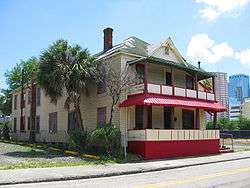
The Jackson Rooming House, the area's only boarding house for blacks, was built in the Scrub in 1901. In 1908, Clara C. Frye opened a hospital for black patients in her home, assisted by Mack Winton. Her dining room table was the operating table.
A building was secured in 1923 and was purchased by the City of Tampa in 1928. The Clara Frye Memorial Hospital that existed in West Tampa from 1938 to 1967 was named after her. The Tampa Municipal Hospital did not admit black patients until the 1950s.
In 1922, Garfield Devoe Rogers Sr. helped start the Central Life Insurance Company, which sold policies to blacks. In 1938, Blanche Armwood became the first black woman in Florida to graduate from an accredited law school. Black Cuban Francisco Rodriguez became a lawyer in 1951. In 1952, the NAACP moved its state headquarters to Tampa, and educator Edward Daniel Davis was president of Central Life Insurance Company.
In 1919, William W. Andrews opened the Florida Sentinel newspaper office in Jacksonville. The office was closed during the Depression. In 1945, General Andrews's son, C. Blythe Andrews, re-opened the Florida Sentinel on Central Avenue. In 1959, he bought the Tampa Bulletin newspaper, and merged the two newspapers to make the Florida Sentinel Bulletin. In 1962, the newspaper office was moved to Ybor City.[90] The C. Blythe Andrews Jr. Public Library was named in his honor.
Cody Fowler formed the Bi-Racial Commission in 1959. His mother Maude helped develop Temple Terrace and is the namesake of Fowler Avenue.[n 7]
Women
In 1900, the Tampa Woman's Club formed.[91] Kate V. Jackson founded the Tampa Civic Association in 1911. In 1923, Elizabeth Dortsch Barnard was the town's first female postmaster. In 1926, the Junior League of Tampa was founded.
Mafia

Beginning in the late 19th century, illegal bolita lotteries were very popular among the Tampa working classes, especially in Ybor City.
Charlie Wall
In the early 1920s, this small-time operation was taken over by Charlie Wall, whose father was the town's former mayor and a pioneer in yellow fever research, John Perry Wall, and whose mother was a McKay.
Wall's operations thrived as he expanded them to include liquor distribution and speakeasies (this was the era of Prohibition) and prostitution. Other smaller organized crime groups tried to muscle in on the action, and long-simmering rivalries were kindled.
These organizations were able to operate openly because of kick-backs and bribes to key local politicians and law enforcement officials. Wall was well-connected, and he used those connections to keep his businesses running and put down his competition. Tampa's political elite, which had held an inconsistent but mostly ambivalent attitude toward organized crime, quietly became de facto partners.
Trafficantes and the Era of Blood
While Charlie Wall was Tampa's first major crime boss, various factions vied for control of the area in later years. Ongoing power struggles resulted in regular organized-crime related "unsolved" murders of crime-connected figures in what became known as the "Era of Blood". To protect their interests (and keep gangland killings unsolved), crime bosses regularly kept local officials – from state attorneys to top law enforcement personnel and even mayors – on the payroll.[92]

The first Italian gang in the Tampa Bay area was created by the Sicilian Ignacio Antinori in 1925. By the late 1940s, most of the area's crime organizations were under the control of mafioso Santo Trafficante, Sr. and his faction. After his death in 1954 from cancer, control passed to his son Santo Trafficante, Jr., who established alliances with families in New York City and extended his power throughout Florida and into Batista-era Cuba.[93][94]
Election controversies
From the early 1930s until the early 1950s, every municipal election was tainted by electoral abnormalities, most with alleged mob connections. The first widespread example was Tampa's mayoral election of 1931, when over 100 people were arrested for "cheating at the polls". Most were supporters of the winning candidate, Robert E. Lee Chancey, who his opponents claimed had close ties to Tampa's "underworld".[95] After the election, all of the charges were either reduced or dropped altogether. Many of those involved had been on the city payroll at the time of their arrest, and most remained there.
The situation was even more chaotic during the next election cycle in 1935. This started before election day when Tampa's chief of police (who supported the incumbent mayor) and the Hillsborough County Sheriff (who supported the challenger) both claimed to be the proper authority to monitor the actual voting. Anticipating trouble, Florida Governor Sholtz mobilized the National Guard to prevent violence. Still, both sheriff's officers and city police were deployed at polling places, resulting in police officers arresting sheriff's deputies and vice versa.[95]
Despite (or perhaps because of) the large number of observers, ballot stuffing and re-voting was widespread. The day may have turned violent if not for the presence of the National Guard troops and a sideswipe from the Labor Day Hurricane of 1935, which passed just west of Tampa during the afternoon and pelted the area with torrential rains and high winds.
In the end, the Tampa Election Board determined that Chancey had easily won re-election. They had reached these results by throwing out all ballots from 29 precincts due to "fraudulent voting". The Board may not have been the most impartial judge of the matter, however, as Chancey had appointed the members himself.[95]
Reforms
.jpg)
The era of rampant and open corruption came to a head in the early 1950s when the Kefauver hearings, Senator Estes Kefauver's traveling investigation of organized crime in America, came to town. Informants (including the retired Charlie Wall) came forward to make startling accusations of corruption throughout Tampa's power structure. The hearings were followed by misconduct trials of several local officials and the "unsolved" murders of some of the government informants (including the retired Charlie Wall).[95]
Though most of the accused persons were acquitted or given light sentences, the trials helped to motivate Tampa to end the corruption and general sense of lawlessness which had prevailed for decades. Ethics and election reforms were passed, and the link between local government and organized crime weakened.
However, major corruption was not eliminated entirely. In 1983, 3 out of the 5 members of the Hillsborough County Commission were charged with accepting bribes. Unlike earlier crooked officials, however, these three were convicted of their crimes and sentenced to federal prison. This scandal resulted in another round of ethics reforms.[96]
Athletics
The first athletic venue in Tampa was Plant Field, a race track and field built by Plant in 1899. In 1908 the YMCA opened.
Curtis Hixon Hall opened in 1965, named for former mayor Curtis Hixon, hosted basketball, boxing matches, and concerts.
In 1992, the Skatepark of Tampa was completed.
Football
In 1926, Jim Thorpe led the barnstorming Tampa Cardinals against Red Grange and the Chicago Bears in the first professional football game in Tampa. The next venue after Plant Field was Phillips Field, which hosted the University of Tampa football team, and was the site of the Cigar Bowl.
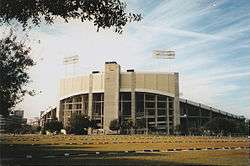
In 1967, Tampa Stadium was built. Tampa was chosen for a team as part of the National Football League's expansion after the AFL/NFL merger in 1970, and the Tampa Bay Buccaneers had their first season in 1976, as members of the AFC West division. The following year, the Bucs were moved to the NFC Central.
The team was the worst in the league until 1979, with a brief period of success from 1979 to 1982 with a defense led by Hall of Famer Lee Roy Selmon. The team was again the worst in the league from 1983 to 1996, until they hired Hall of Fame coach Tony Dungy who pioneered the Tampa 2 defense. In 1998, the team moved to Raymond James Stadium.
In 2002, the Bucs moved to the NFC South, and under head coach Jon Gruden the team won Super Bowl XXXVII. Tampa hosted Super Bowls XVIII, XXV, and XXXV. Super Bowl XLIII was hosted in Tampa, and LV is scheduled to be. Tampa also hosts the Outback Bowl. There also used to be the Tampa Bay Bandits of the United States Football League, coached by Steve Spurrier, and the Tampa Bay Storm of the Arena Football League. "The War on I-4" refers to both the Tampa-Orlando rivalry in arena football and college football.
Baseball
In 1913, the Chicago Cubs moved their spring training site to the city of Tampa. The original minor league baseball team in Tampa was the Tampa Smokers, established in 1919 as a charter member of the Florida State League.
The New York Yankees train in Tampa at George M. Steinbrenner Field, formerly Legends Field, which is the home of the Tampa Tarpons. Al Lopez Field used to be in West Tampa, named for Hall of Famer and Tampa native Al Lopez. Lopez's home is now the Tampa Baseball Museum. USF baseball used to play at Red McEwen Field.
In 1998, Tampa got a Major League Baseball team, the Tampa Bay Devil Rays, which plays at Tropicana Field. Hall of Famer Wade Boggs grew up in Tampa, as did Tony La Russa, Lou Piniella, Tino Martinez, Luis Gonzalez, Doc Gooden, and Gary Sheffield.
The Devil Rays changed their name to the Rays in 2008. USF Baseball Stadium opened in 2011. .
Basketball
USF basketball plays at the Yuengling Center, formerly the Sun Dome.
Hockey
The Tampa Bay Lightning of the National Hockey League formed in 1992, and plays at Amalie Arena, formerly the Ice Palace and St. Pete Times Forum. The Lightning won the Stanley Cup in 2004.
Soccer
There used to be the Tampa Bay Rowdies and Tampa Bay Mutiny.
Tennis
From 1979 to 1990, Tampa hosted the Eckerd Open.
Golf
Garfield Rogers built Rogers Park, the first golf course for blacks in Tampa. In 1974, the City of Tampa took over Babe Zaharias's golf course in the Forest Hills neighborhood.
21st century
The Stovall was built in 2001. The Ruby programming language conference was held in Tampa in 2001. The Florida Museum of Photographic Arts also started in 2001. The American Victory Ship & Museum with SS American Victory started in 2003. The Ford Amphitheater, and Seminole Hard Rock Hotel and Casino Tampa in Tampa Indian Reservation, also opened in 2004.
2002 plane crash
On January 5, 2002, just four months after the September 11, 2001, terrorist attacks, 15-year-old amateur pilot Charles Bishop crashed a Cessna plane into the Bank of America Plaza. Bishop died, but there were no other injuries (because the crash occurred on a Saturday, when few people were in the building). A suicide note found in the wreckage expressed support for Osama bin Laden. Bishop had been taking a prescription medicine for acne called Accutane that may have had the side effect of depression or severe psychosis. His family later sued Hoffman-La Roche, the company that makes Accutane, for $70 million; however, an autopsy found no traces of the drug in the teenager's system.
2004 hurricane season
The 2004 Atlantic Hurricane Season was historically busy for all of Florida, including Tampa. Tampa's climate was affected by a record four hurricanes that year; Frances, Jeanne, Charley, and to a lesser extent, Ivan.
The eyes of both Jeanne and Frances passed within a few miles of Tampa as they slashed their way across the state from the east coast. Charley was forecast to make a direct hit on Tampa Bay from the south (the worst-case scenario for local flooding). But the storm made a sudden and unexpected turn to the northeast and brought only tropical storm force winds to Tampa, devastating the Ft. Myers/Port Charlotte area instead. Ivan roared past the Florida gulf coast on its way to landfall near the Alabama/Florida border, passing near enough to bring high seas and stormy conditions to the Tampa area.
Downtown revitalization
Former Tampa mayor Pam Iorio made the redevelopment of downtown a priority and focused on bringing residents into the decidedly non-residential area.[97] Several residential and mixed-development high-rises were planned and constructed. The Alagon on Bayshore was built in 2006. The Towers of Channelside and SkyPoint were finished in 2007. Element was built in 2009.
Riverwalk
Another of Mayor Iorio's initiatives was to improve the Tampa Riverwalk. The development plan expanded use of the land along the Hillsborough River in downtown, where Tampa was first established. The Curtis Hixon Waterfront Park opened in 2010, next to the Riverwalk and the former site of Curtis Hixon Hall. Water Works Park opened in 2014.
Museums
Several museums were part of the plan, including the Florida Museum of Photographic Arts, which relocated in 2006, the Tampa Bay History Center, which began in 2009; the Tampa Children's Museum, which relocated in 2010 and was renamed the Glazer Children's Museum, the Tampa Museum of Art, which relocated in 2010.[98]
Tampa Mayor Bob Buckhorn has continued the development and redevelopment focused work. The 2012 Republican National Convention was held in Tampa
Historical monuments
In 2012, commissions for six bronze busts of prominent figures from the history of Tampa put on the Riverwalk, sculpted by Steven Dickey. They included Mocoso, Tocobaga, and Pohoy mound builders; James McKay Sr.; Vicente Martinez Ybor; Henry B. Plant; Eleanor McWilliams Chamberlain; and Clara C. Frye.[99][n 8]
In 2013, six additional busts were unveiled on the Riverwalk: Cyril Blythe Andrews; Cody Fowler; Kate V. Jackson; Peter O. Knight; Paulina Pedroso; and Garfield Devoe Rogers.[102]
Another six were unveiled in December 2014. They included: Blanche Armwood; Herman Glogowski; Gavino Gutierrez; Bena Wolf Maas; Hugh Macfarlane; and Moses White.[103]
Another six were unveiled in 2016. They included: Meroba Hooker Crane, Edward Daniel Davis, Ignacio Haya, Francisco Rodriguez, Norma Tina Russo, and Mack Ramsey Winton.[104]
In 2017, six more were added. They include: Frank Adamo, Elizabeth D. Barnard, Ossian B. Hart, Victoriano Manteiga, Benjamin Mays, and Stephen M. Sparkman.[105]
Notes
- That downtown church, First United Methodist Church of Tampa, remained open until 2011.[23]
- John A. Henderson was mayor during these years.[39]
- A large downtown parking garage near the old fort site is called the Fort Brooke Parking Garage.[41]
- 1850 census population included Fort Brooke, which was located outside the municipal limits. The census was not returned separately by enumerators in 1860.[42]
- Stovall's house on Bayshore Boulevard still stands.
- In the 1970s columnist Steve Otto gave Tampa the nickname The Big Guava, mimicking New York's "Big Apple". Halloween in Ybor City is known as Guavaween.
- Cody's house is in Temple Terrace.
- Nine historians including former Tampa Tribune reporter Leland Hawes and Tampa Bay History Center curator Rodney Kite-Powell made the selections.[100][101]
References
- Ben Cahoon. "Mayors of U.S. Cities M-W". Worldstatesmen.org. Retrieved 2010-05-16.
- Stewart 2008, p. 231
- "Page 1". digitalcollections.hcplc.org.
- Milanich 1995, p. 40
- Milanich 1989: 299
- Milanich 1995, pp. 28, 73, 103–104, 110
- Bullen, Ripley P. (1978). "Tocobaga Indians and the Safety Harbor Culture". In Milanich and Procter.
- Milanich 1995
- Brown 1999
- Perry, Mac (1998). Indian Mounds You Can Visit: 165 Aboriginal Sites on Florida's West Coast. St. Petersburg, Fl: Great Outdoors Publishing. ISBN 0-8200-1039-1.
- Federal Writers' Project 1939, p. 286
- Floripedia "De Soto, Hernando" – URL retrieved January 30, 2007
- Hann, John H. (2003). Indians of Central and South Florida: 1513–1763. University Press of Florida. ISBN 0-8130-2645-8
- Thomas Angarano (1915-05-27). "About Tampa Bay – Pinellas County History". Webcoast.com. Retrieved 2010-05-16.
- "Excavators seeking freedom pioneers – St. Pete Times". Sptimes.com. Retrieved 2010-05-16.
- "Looking for Angola". Looking for Angola. Archived from the original on 2010-08-15. Retrieved 2010-05-16.
- "The Seminole Wars". fcit.usf.edu.
- museumofcigars.com. "fort brooke". Museumofcigars.com. Retrieved 2010-05-16.
- Brown-Hazen, Pauline (1914). The Blue Book and History of Pioneers (1st ed.). Tampa, Florida: Tribune Publishing Company. pp. 4–31. OCLC 19034562.
- http://www2.census.gov/prod2/decennial/documents/1850c-11.pdf
- Archived January 29, 2007, at the Wayback Machine
- City of Tampa Incorporation History Archived February 12, 2007, at the Wayback Machine
- “Tampa's Oldest Church, First United Methodist, Will Close”. Archived 2015-08-22 at the Wayback Machine Tampa Bay Times.. Retrieved August 7, 2015.
- “About Us”. First Baptist Church of Tampa.. Retrieved February 27, 2010.
- “Sacred Heart Parish History”. Archived 2010-02-13 at the Wayback Machine Sacred Heart Catholic Church.. Retrieved February 27, 2010.
- "P2. Magbee & the Civil War in TAMPA". www.tampapix.com.
- James Gettis: Tampa Pioneer Lawyer by Kyle S. VanLandingham Sunland Tribune March 2018 Sunland Tribune: Vol. 23, Article 6. PDF file via Scholar Commons . usf. edu
- "Military Rule of Tampa During Civil War". Tampagov.net. Archived from the original on 2007-09-23. Retrieved 2010-05-16.
- "James McKay, Sr. – 6th Mayor of Tampa". Tampagov.net. Archived from the original on December 21, 2009. Retrieved 2010-05-16.
- https://scholarcommons.usf.edu/cgi/viewcontent.cgi?referer=&httpsredir=1&article=1220&context=sunlandtribune
- "Florida Civil War Battle Tampa Bay American War Between the States". Americancivilwar.com. Retrieved 2010-05-16.
- "Battle Summary: Tampa, Florida". Cr.nps.gov. Archived from the original on 2011-04-25. Retrieved 2010-05-16.
- "Archived copy". Archived from the original on 2007-08-09. Retrieved 2007-08-15.CS1 maint: archived copy as title (link)
- Pizzo 1968
- Pizzo 1968, p. 71
- Robinson 1928, p. 60
- Grismer 1950, p. 165
- "Edward A. Clarke – 10th Mayor of Tampa". Tampagov.net. Archived from the original on January 15, 2010. Retrieved 2010-05-16.
- "John Alexander Henderson – Mayor Of Tampa (Non-Chartered Years)". Retrieved February 6, 2007.
- "University of South Florida (USF) Scholar Commons Graduate Theses and Dissertation Series – Graduate School – University of South Florida". scholarcommons.usf.edu.
- "Fort Brooke Garage". Tampagov.net. Archived from the original on 2010-04-29. Retrieved 2010-05-16.
- "CENSUS OF POPULATION AND HOUSING (1790–2000)". U.S. Census Bureau. Archived from the original on 2010-07-08. Retrieved 2011-04-11.
- Grismer 1950, pp. 192–193
- Hazen 1914, p. 14
- "Capt W. H. Kendrick Dead". The Weekly Tribune. November 28, 1901. p. 5 – via Newspapers.com.

- Tampa Port Authority Archived August 9, 2007, at the Wayback Machine
- "About Bone Valley". Baysoundings.com. Archived from the original on 2011-07-07. Retrieved 2010-05-16.
- "Port_Tampa_City_Yesteryear". Porttampa.org. Retrieved 2010-05-16.
- "Henry B. Plant Museum – The History". Plantmuseum.com. Retrieved 2010-05-16.
- Grismer 1950, p. 190
- Grismer 1950, pp. 182–183
- Durward Long. "The Historical Beginnings of Ybor City and Modern Tampa" (PDF). The Florida Historical Quarterly. 45: 34.
- http://www.tampapix.com/lasnovedades.htm
- Garcia, Wayne. "Creative Loafing Tampa | News | The Western Front". Tampa.creativeloafing.com. Retrieved 2010-05-16.
- "Archived copy". Archived from the original on 2007-02-27. Retrieved 2007-02-06.CS1 maint: archived copy as title (link)
- “St. Andrew’s Episcopal Church”. The Historical Marker Database.. Retrieved February 27, 2010.
- “About Us”. Archived January 15, 2010, at the Wayback Machine First Presbyterian Church of Tampa.. Retrieved February 27, 2010.
- “About Us”. Archived 2008-11-01 at the Wayback Machine Zion Evangelical Lutheran Church. Archived 2011-09-28 at the Wayback Machine. Retrieved February 27, 2010.
- “Our History”. Archived September 11, 2010, at the Wayback Machine Congregation Schaarai Zedek.. Retrieved February 27, 2010.
- “Our History”. Archived January 18, 2010, at the Wayback Machine St. James House of Prayer.. Retrieved February 27, 2010.
- “History”. Archived 2008-07-06 at the Wayback Machine Beulah Baptist Institutional Church. Archived 2011-06-13 at the Wayback Machine. Retrieved February 27, 2010.
- “Tampa - Florida’s Industrial Port City”. Archived October 21, 2010, at the Wayback Machine Florida History Internet Center.. Retrieved February 27, 2010.
- Marston C. Leonard (November 1978). "Tampa Heights: Tampa's First Residential Suburb" (PDF). Sunland Tribune. 4 (1): 6–10.
- Jones, Lucy (2006-06-01). "Tampa's Lafayette Street bridge: Building a New South city". Graduate Theses and Dissertations.
- "Kennedy / Lafayette St. Bridge History, Tampa - Part 1". tampapix.com. Retrieved 2019-04-12.
- Federal Writers' Project 1939, p. 287
- "Archived copy". Archived from the original on 2007-08-09. Retrieved 2007-08-13.CS1 maint: archived copy as title (link)
- "Henry B. Plant Museum – Spanish–American War". Plantmuseum.com. Retrieved 2010-05-16.
- "José Martí". Cigar City Magazine. 2007-03-13. Archived from the original on 2008-10-06. Retrieved 2010-05-16.
- "Stephen M. Sparkman « Tampa Riverwalk".
- https://www.tampabay.com/news/business/realestate/Channelside-Bay-Plaza-to-be-remade-as-Sparkman-Wharf-with-waterfront-lawn-beer-garden-outdoor-dining-and-loft-style-offices_170322184
- "Burgert Brothers Photographic Collection". Hillsborough County Public Library Cooperative. Retrieved August 13, 2014.
- Ybor City: The Making of a Landmark Town by Frank Lastra
- "SMOKESHOP 08/09 – Industry News". www.smokeshopmag.com.
- 1930 U.S. Census
- 1940 U.S. Census
- 1950 U.S. Census
- census.gov
- previous city council members tampagov.net (access date: February 6, 2007) (dead link date=May 2016)
- 1960 U.S. Census
- [By Elaine C. Iles and Jo-Anne Peck]. "Services – Office of Cultural & Historical Programs". Flheritage.com. Archived from the original on 2010-10-29. Retrieved 2010-05-16.
- "Nation: How to Cool It". Time. June 30, 1967. Retrieved May 4, 2010.
- "Archived copy" (PDF). Archived from the original (PDF) on 2006-09-09. Retrieved 2007-02-06.CS1 maint: archived copy as title (link)
- 1990 U.S. Census
- "Tony Jannus, An Enduring Legacy of Aviation". Archived 2008-02-04 at the Wayback Machine The Tony Jannus Distinguished Aviation Society.. Retrieved February 23, 2010.
- "Take Flight", December 2009. The Tony Jannus Distinguished Aviation Society. Retrieved February 23, 2010.
- Bennett, Lennie, October 13, 2002. "A legacy takes flight", St. Petersburg Times.. Retrieved February 23, 2010.
- "Archived copy". Archived from the original on 2007-08-09. Retrieved 2007-08-13.CS1 maint: archived copy as title (link)
- Florida Sentinel Bulletin Marker (photo).
- https://scholarcommons.usf.edu/cgi/viewcontent.cgi?referer=&httpsredir=1&article=1164&context=sunlandtribune
- Deitche, Scott. "Creative Loafing Tampa | News | Cover | The Mob". Tampa.creativeloafing.com. Archived from the original on 2009-01-13. Retrieved 2010-05-16.
- Deitche, Scott. "Creative Loafing Tampa". Weeklyplanet.com. Archived from the original on 2006-03-15. Retrieved 2010-05-16.
- "Feature Articles 101". AmericanMafia.com. Archived from the original on 2010-02-06. Retrieved 2010-05-16.
- Kerstein 2001
- Deeson, Mike (1983-02-01). "Public Corruption Arrests 25 years later". Tampabays10.com. Retrieved 2010-05-16.
- "Floridian: Urban culture clash". Sptimes.com. Retrieved 2010-05-16.
- "Creative Loafing Tampa | News | Downtowns On The Verge". Tampa.creativeloafing.com. Archived from the original on 2009-04-23. Retrieved 2010-05-16.
- [Riverwalk honors history] March 7, 2012 Tampa Bay Times
- Tampa's Riverwalk will honor city's history, people March 4, 2012 Tampa Bay Times Retrieved March 22, 2013
- Tampa's Riverwalk will honor city's history, people By Josh Poltilove March 4, 2012 TBO.com
- New monuments unveiled at Tampa's Riverwalk December 3, 2013 Bay New 9
- "Historical figures revealed on Tampa's Riverwalk" Dec 12, 2014 By CHIP WEINER Creative Loafing
- https://www.tampabay.com/news/humaninterest/tampa-honors-six-more-pioneers-with-bronze-busts-on-the-riverwalk/2305601
- FOX. "Bronze monuments dedicated on Tampa Riverwalk". FOX13news.
Bibliography
- Brown, Canter (1999). Tampa before the Civil War. Tampa: University of Tampa Press. ISBN 978-1-879852-64-8.CS1 maint: ref=harv (link)
- Brown, Canter (2000). Tampa in Civil War & Reconstruction. Tampa: University of Tampa Press. ISBN 978-1-879852-68-6.
- Federal Writers' Project (1939), "Tampa", Florida; a Guide to the Southernmost State, American Guide Series, ISBN 9781623760090 – via Google Books (also via Open Library)
- Grismer, Karl (1950). Tampa (PDF).CS1 maint: ref=harv (link)
- Harrison, Charles E. (1915). Genealogical records of the pioneers of Tampa and of some who came after them.CS1 maint: ref=harv (link)
- Hazen, Pauline Brown (1914). The Blue Book and History of Pioneers, Tampa Florida (PDF).CS1 maint: ref=harv (link)
- Ivey, Donald J. (1998). The Life and Times of John Thomas Lesley.CS1 maint: ref=harv (link)
- Kerstein, Robert (2001). Politics and Growth in Twentieth-Century Tampa. Gainesville, Florida: University Press of Florida. ISBN 0-8130-2083-2.CS1 maint: ref=harv (link)
- Lastra, Frank (2005). Ybor City: the Making of a Landmark Town. Tampa: University of Tampa Press. ISBN 978-1-59732-003-0.
- Long, Durward. "The Making of Modern Tampa: A City of the New South, 1885–1911." Florida Historical Quarterly 49.4 (1971): 333–345. in JSTOR
- Long, Durward. "Labor relations in the Tampa cigar industry, 1885–1911." Labor History 12.4 (1971): 551–559.
- Messenger, Stephen T. "The Trains Stop at Tampa: Port Mobilization During the Spanish–American War and the Evolution of Army Deployment Operations" Army History (2017) 104:34-55.
- Milanich, Jerald (1995). Florida Indians and the Invasion from Europe. Gainesville, Florida: University Press of Florida. ISBN 0-8130-1360-7.CS1 maint: ref=harv (link)
- Mormino, Gary (1998). The Immigrant World of Ybor City. Gainesville, Florida: University Press of Florida. ISBN 978-0-8130-1630-6.
- Mormino, Gary R., and George E. Pozzetta. "Immigrant Women in Tampa: The Italian Experience, 1890–1930." Florida Historical Quarterly 61.3 (1983): 296–312. in JSTOR
- Mormino, Gary R. "Tampa's Splendid Little War: Local History and the Cuban War of Independence" OAH Magazine of History 12#3 (1998), pp. 37–42 in JSTOR
- Peeples, Harry A. (1906). Twenty-four Years in Florida. Tribune Printing Co.CS1 maint: ref=harv (link)
- Pérez, Louis A. "Cubans in Tampa: From Exiles to Immigrants, 1892–1901." Florida Historical Quarterly 57.2 (1978): 129–140. in JSTOR
- Pizzo, Anthony (1968). Tampa Town 1824–1886: Cracker Village with a Latin Accent. Tampa, Fl: Hurricane House.CS1 maint: ref=harv (link)
- Pizzo, Anthony (1983). Tampa the Treasure City. Tulsa, Oklahoma: Continental Heritage Press. ISBN 978-0-932986-38-2.
- Robinson, Ernest. L (1928). History of Hillsborough County, Florida (PDF).CS1 maint: ref=harv (link)
- Stewart, George (2008). Names on the Land: a Historical Account of Place-Naming in the United States. New York: NYRB Classics. ISBN 978-1-59017-273-5.CS1 maint: ref=harv (link)
External links
| Wikimedia Commons has media related to History of Tampa, Florida. |
- Tampa Bay History Center
- Tampa, Florida, by the Jewish Virtual Library
- Survey Map of Downtown Tampa University of South Florida Libraries: an 1853 survey map is aligned with a current satellite image allowing comparison and exploration
- University of South Florida Libraries: Tampa Bay History Journal A digitized collection of the journal Tampa Bay History, which features contributions from scholars of Florida history
- University of South Florida Libraries: special collections Digitized photographs exploring the history of Tampa and Hillsborough County
- University of South Florida Libraries: Hillsborough County and Tampa Map Collection Local maps between 1855 and 1970